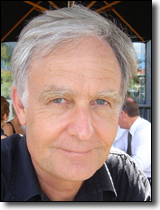


The International Union of Physiological Sciences (IUPS) Physiome Project is an internationally collaborative open-source project to provide a public domain framework for computational physiology that can link systems biology to integrative physiology and clinical imaging. The project includes the development of modeling standards, computational tools and web-accessible databases (Nature Reviews Molecular and Cell Biology 4:237-243, 2003). It requires the creation of databases of mathematical models of structure and function at spatial scales which encompass nano-scale molecular events to the meter scale of the human body, a range of 10^9, and temporal scales from Brownian motion (microseconds) to a human lifetime (10^9 s), a range of 10^15. Clearly this cannot be represented by one model but rather a hierarchy of models and modeling approaches such as stochastic models of ion channels, ordinary differential equation lumped cell models, and anatomically based partial differential equation continuum models at the tissue and organ levels. It requires the use of "multi-physics" modeling to deal with coupled biophysical processes and also requires the model parameters at one scale to be linked to detailed models of structure and function at a smaller spatial scale – hence the need for "multi-scale modeling".
Dr. Peter J. Hunter is Director of the Bioengineering Institute at the University of Auckland, New Zealand, and Director of Computational Physiology at Oxford University. He completed an engineering degree in 1971 in Theoretical and Applied Mechanics at the University of Auckland, a Master of Engineering degree in 1972 (Auckland) on solving the equations of arterial blood flow and a DPhil (PhD) in Physiology at the University of Oxford in 1975 on finite element modeling of ventricular mechanics. His major research interests since then have been modelling many aspects of the human body using specially developed computational algorithms and an anatomically and biophysically based approach which incorporates detailed anatomical and microstructural measurements and material properties into the continuum models. The interrelated electrical, mechanical and biochemical functions of the heart, for example, have been modelled in the first ‘physiome’ model of an organ. As the current co-Chair of the Physiome Committee of the International Union of Physiological Sciences he is helping to lead the international Physiome Project which aims to use computational methods for understanding the integrated physiological function of the body in terms of the structure and function of tissues, cells and proteins.